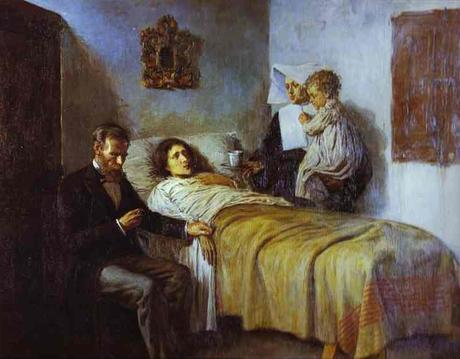It's not every day that you get to visit the Picasso Museum, so you'll want to make the best of your time spent there. It's home to well over 3,000 pieces, making it one of the most extensive collections of the artist's work, and if you don't plan your trip you might start feeling a little overwhelmed. That's why we made a list of 5 must-see paintings of Picasso Museum Barcelona to help you fully enjoy your visit.
5 must-see paintings of Picasso Museum Barcelona
The First Communion (1896)

Most of the pieces on display at the Museu Picasso Barcelona are gems from the artist's formative years, between 1890 and 1917. He painted his first large-scale oil painting "First Communion" while attending the art academy La Lonja in Barcelona. The painting attracted attention of the local press while part of a large exhibition, marking a transition between artistic childhood and adulthood and introducing his work into the public domain. A fun fact is that Picasso's father posed for the male figure in the painting.
Science and Charity (1897)

Pablo Picasso painted this prize-winning oil on canvas when he was just fifteen years old. The realistic painting depicts a doctor attending to a sick woman, medicine being a popular theme at the end of the 19th century. The piece is the pinnacle of Picasso's traditional academic training, a style that he departed from to pursue more creatives avenues, despite his father's wishes for his future. A peculiarity of the painting is that the bed looks longer or shorter depending on where you're standing in the room. Give it a try!
The Madman (1904)

The Blue Period (1901-1904) is a series of monochromatic paintings in shades of - you guessed it - blue. Artworks from this period are among Picasso's most popular, although he had difficulty selling them at the time. Suffering from a depression brought on by the tragic death of a friend, the artist focused on the poor and marginalized, leading him to paint beggars, the elderly, and the blind.
A whole room is dedicated to this period at the Barcelona Picasso Museum, but make sure to check out "The Madman". A seemingly simple watercolor on paper, he plays with perspective and distorted dimensions to illustrate the subject's madness. It is an exquisite example of the stylized, elongated figures that characterizes the series.
Harlequin (1917)

Picasso began painting the harlequin in 1901 and never really stopped. The figure is the protagonist of the Rose Period and the artist described it as his "alter-ego". This particular harlequin was presented to the Gran Liceu Theater and later donated to the art museums of Barcelona, making it his first artwork to be included in the city's museums. There are clearly contrasting styles within the composition: the curtains are classical while the wardrobe coincides with his Cubist roots. This is said to be a reflection of the artist's attempt to reconcile and interpret reality.
Las Meninas (1957)

As a teenager Picasso would spend hours admiring "Las Meninas" (The Maids of Honor, 1656) by Diego Velazquez at the Prado Museum in Madrid. Years later, while in exile in France, this long-held fascination led to his extensive study of the masterpiece. Over of a period of 5 months in 1957, he painted interpretation after interpretation of the original, resulting in the 58 pieces that comprise the series. Have fun comparing his different versions with each other and with Velazquez's original painting.
...And That's Not All!
Picasso wasn't just a master painter. Also on display are his sculptures, ceramics pieces, lithographs and etchings. This fascinating collection is housed in 5 spectacular adjoining medieval palaces. This is an unforgettable experience that the whole family can enjoy! Make sure to book your Picasso Museum Barcelona Tickets ahead of time to avoid the long lines.
